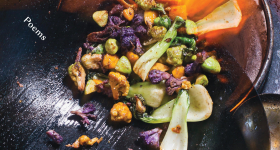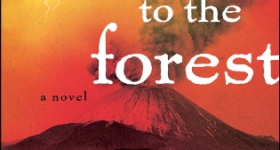In 1962, Kenichi Horie, a 23-year-old Japanese adventurer,
sailed from Osaka to San Francisco and became the first person to sail solo
across the Pacific Ocean. In Kodoku, Horie’s story is retold in a
children’s book, written by William Emery and beautifully illustrated by Hanae
Rivera.
In Kodoku, young
Kenichi grows from a boy dreamer to a man, compelled to endure the hardships of
the sea to achieve his goal. It is the journey
that drives the young Kenichi. The
journey begins with a battle with a typhoon, and eventually finds its rhythm
with a sense of Kenichi accepting the ocean, its vastness, power, and beauty.
Hanae Rivera’s illustrations are vivid and muscular, reflecting
Kenichi’s transformation from boy to a man. The images of the ocean are reminiscent of Hokusai wood block prints of
waves, capturing the beauty and power of the sea. Through Rivera’s art, the ocean emerges as
the main character in this story, the one that offers a full range of emotion
to Kenichi’s journey: fear, hope, sadness, grace, joy.
In reviewing this children’s book, I read Kodoku to my 3-year-old son, Milo. At first, I thought Kodoku might be too abstract and scary for a 3-year-old. The idea of the ocean as an unforgiving
monster, vast and all-powerful, might be difficult to understand for a child
with limited exposure to the sea. (Our
trips to the sea coast mean sand castles and gentle waves, and the sharks in
the aquarium live in big tanks.) But
Milo was rapt with this book. He asked
me to read it again and again. The
passage that captured his attention most was the following, after Kenichi
survives the typhoon:
The ocean and the sky were bright and new and calm, but
Kenichi could not see them. He sat
huddled in a shadow. He had been so
scared, but there were no arms to hold him, no eyes to warm him, no voice but
his own. He cried out: Kodoku—the cry of loneliness. The Kenichi breathes evenly. He mended the little things the typhoon had
broken. A porthole.The sail. His courage.
“What’s courage?” Milo asked.
Hmmm. How does one
explain courage to a 3-year-old? Mommy
does the best she can. “Courage is when you do the right thing, even when
you’re afraid,” I said. “Kenichi was very
scared after the big typhoon, but he kept sailing across the ocean. He didn’t give up.”
Milo considered this for a moment, then nodded
tentatively. I tried to come up with
examples of courage in his own young life: his first day of pre-school, going
down a slide by himself, learning to jump into a pool. Tiny steps of courage in his young
journey.
Frankly, I don’t know if Milo understood the word
“courage.” Certainly, very few of us
will ever truly understand Kenichi Horie’s courage to sail across the
Pacific. But to me, it’s the mark of a
good story that inspires questions about a human virtue such as courage. The fact that this book managed to do so in
my 3-year-old son is worthy of note.
In the end, Milo also loved the fact that Kenichi catches
fish with his bare hands and makes friends with whales. The jellyfish were pretty cool too. And for the record, when Kenichi sails into
San Francisco, the Golden Gate Bridge
isn’t gold, it’s orange.
Sabina Chen reads,
writes, and chases after her toddler in New Hampshire.









Comments